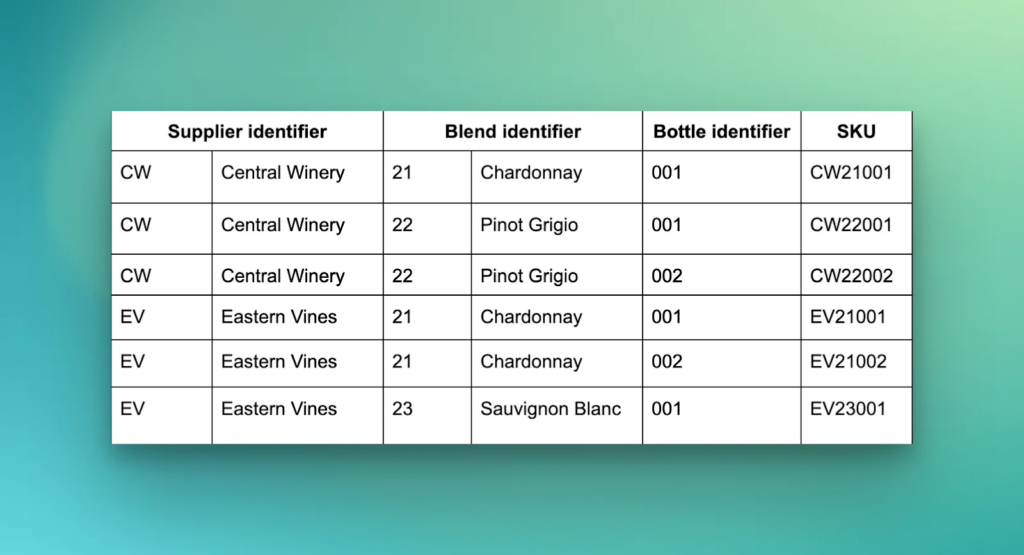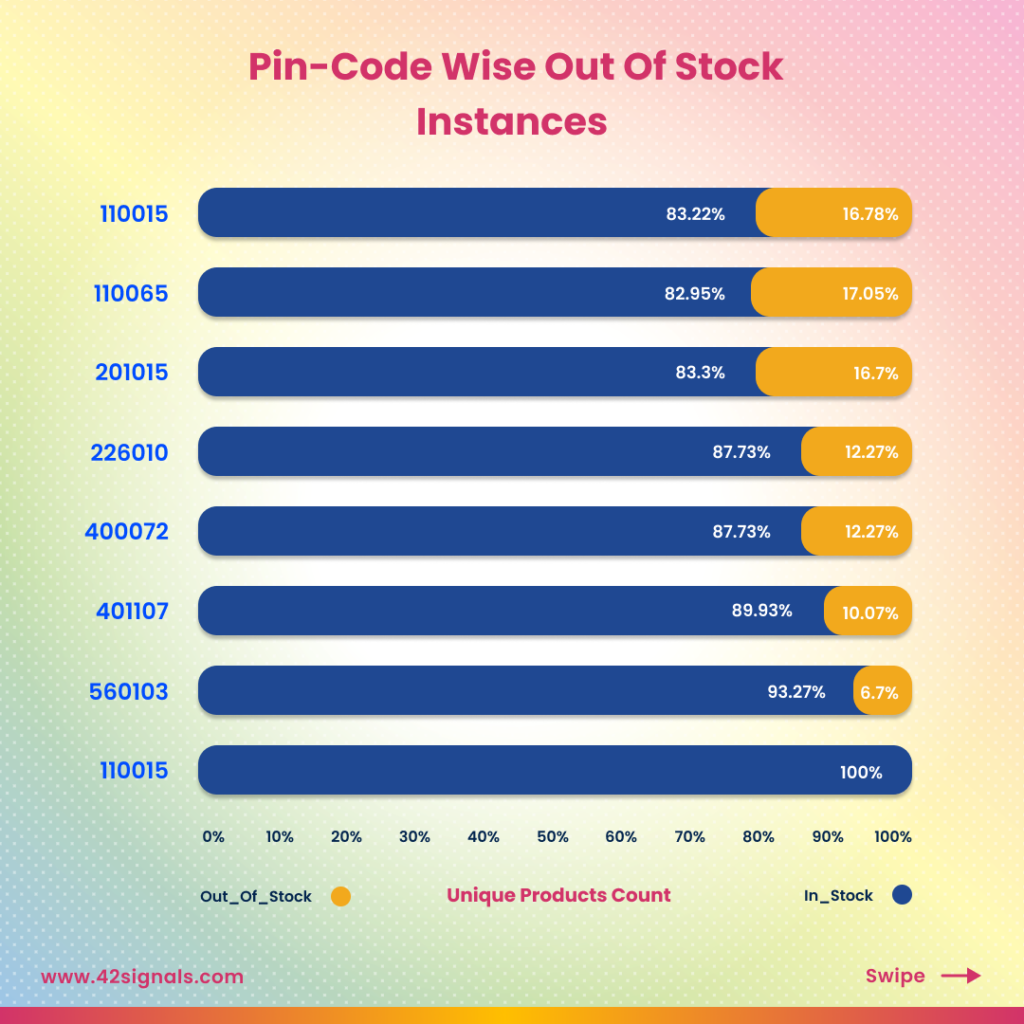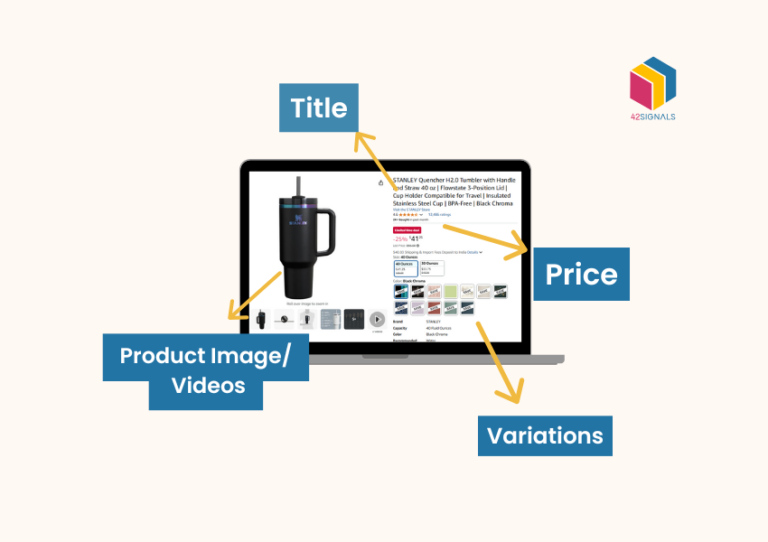The quick commerce sector has experienced exponential growth, driven by the demand for instant delivery of daily essentials. Dark stores, which are essentially fulfillment centers optimized for rapid order processing, play an important role in meeting these demands. Efficient inventory management, through the tracking of SKU data, within these facilities is critical, as it directly influences product availability, consumer satisfaction, and operational efficiency.
Let’s explore how SKU data can be effectively leveraged to maintain well-organized inventory, ensure product availability, and generate valuable consumer insights, all while improving the overall functioning of dark stores.
What is SKU Data? Why Does It Matter in Quick Commerce?

Image Source: Investopedia
SKU data refers to the unique identifiers assigned to individual products, enabling businesses to track their inventory with precision. Each SKU contains essential details such as product type, size, brand, and other attributes that distinguish one item from another.
This data forms the foundation for all inventory management activities, serving as a digital blueprint for what is stocked, where it is stored, and how it moves through the supply chain.
Dark stores, operating without the traditional customer-facing retail space, rely heavily on streamlined backend operations. SKU data offers the granularity required to monitor inventory levels, analyze trends, and forecast demand accurately.

Image Source: Shopify
How SKU Data Insights Improve Inventory Management?
Inventory management in dark stores is more complex than in traditional retail due to the need for rapid turnover and space optimization.

SKU data can significantly improve the organization and efficiency of inventory processes in several ways:
1. Dynamic Stock Allocation
By analyzing past sales data and patterns linked to specific SKUs, dark stores can allocate inventory more effectively. Products with higher demand in certain regions or during specific time frames can be strategically placed in accessible locations within the facility.
2. Minimizing Overstock and Stockouts
Overstocking ties up valuable storage space, while stockouts lead to missed revenue and dissatisfied customers. SKU-level tracking helps balance supply and demand, ensuring just the right amount of inventory is available at all times.
3. Space Optimization
With detailed SKU data, dark stores can categorize products based on their movement frequency. Fast-moving items are stored closer to packing stations, reducing the time needed to fulfill orders. This layout optimization leads to faster order processing and improved operational flow.
How does Forecasting Enhances Product Availability & Demand Planning?
One of the primary goals of quick commerce is to ensure that consumers have access to the products they want, precisely when they need them.

SKU data plays an essential role in forecasting demand and maintaining product availability:
1. Predicting Seasonal Demand
By examining historical data, businesses can identify trends and prepare for spikes in demand during holidays or seasonal events. This forecasting allows dark stores to stock up on popular items in advance, ensuring consistent availability.
2. Real-Time Inventory Updates
With SKU-level tracking integrated into inventory systems, businesses gain real-time visibility into stock levels. This transparency prevents accidental overselling of items and facilitates timely replenishment.
3. Automated Reordering
Many advanced inventory management systems use SKU data to automate the reordering process. When stock levels of a particular product fall below a pre-defined threshold, the system triggers a purchase order to restock the item. This automation reduces manual errors and ensures a steady supply chain.
How SKU Data Drives Valuable Consumer Insights?
SKU data doesn’t just improve backend operations—it also provides valuable insights into consumer behavior and preferences. By analyzing the purchasing patterns associated with different SKUs, businesses can uncover trends that inform marketing strategies, product assortment decisions, and personalized customer experiences.

1. Identifying Popular Products
SKU data reveals which items are frequently purchased, enabling businesses to prioritize these products in their inventory. Additionally, understanding popular combinations of products can lead to targeted upselling and bundling opportunities.
2. Customizing Promotions
By correlating SKU data with demographic and regional insights, businesses can create tailored promotions that resonate with specific customer groups. For instance, offering discounts on products popular among younger consumers in urban areas could drive sales more effectively.
3. Understanding Consumer Preferences
SKU data helps businesses identify shifts in consumer behavior, such as a growing preference for sustainable or locally sourced products. This understanding allows dark stores to adapt their inventory to align with changing customer expectations.
How to Strengthen Operational Efficiency for Maximum Impact?
Beyond inventory and consumer insights, SKU data contributes to the overall efficiency of dark store operations. Accurate SKU tracking minimizes errors during order picking and packing, reducing the likelihood of returns or delays. Additionally, analyzing SKU performance over time can guide decisions related to product discontinuation, supplier relationships, and pricing strategies.
Key Challenges and Considerations
While SKU data is a powerful tool, its effective utilization requires careful implementation and management. Businesses must invest in advanced inventory management systems capable of processing and analyzing SKU data at scale. Regular audits and data quality checks are also necessary to ensure accuracy and reliability.
Integration with other business systems, such as customer relationship management (CRM) and enterprise resource planning (ERP), can further enhance the value of SKU data by providing a holistic view of operations. Additionally, training staff to understand and leverage SKU data insights is crucial for seamless execution.
Conclusion
The integration of SKU data into the operations of dark stores has become essential for meeting the unique demands of quick commerce. From improving inventory management practices to ensuring product availability and extracting consumer insights, the applications of SKU data are vast and transformative.
By leveraging the potential of SKU data, quick commerce operators can transform their dark stores into efficient, customer-focused fulfillment hubs that keep pace with the growing demand for convenience and immediacy.Curious about tracking SKU data? Schedule a demo with us.







